Xiaomi's 12 series established new benchmarks in mobile technology, delivering a refined lineup that included the Xiaomi 12 Lite, Xiaomi 12, Xiaomi 12 Pro, Xiaomi 12 Ultra, Xiaomi 12T, and Xiaomi 12T Pro.
This generation marked Xiaomi's commitment to premium design and cutting-edge performance, with flagship models featuring the powerful Snapdragon 8 Gen 1 processor and advanced camera systems that elevated mobile photography to new heights.
The series introduced significant improvements in display technology, charging speeds, and overall build quality, while maintaining Xiaomi's reputation for delivering exceptional value. From the compact and efficient 12 Lite to the photography-focused 12 Ultra with its impressive zoom capabilities, each model was carefully crafted to meet specific user needs without compromising on the premium experience that defines the 12 series.
Xiaomi 12 Lite
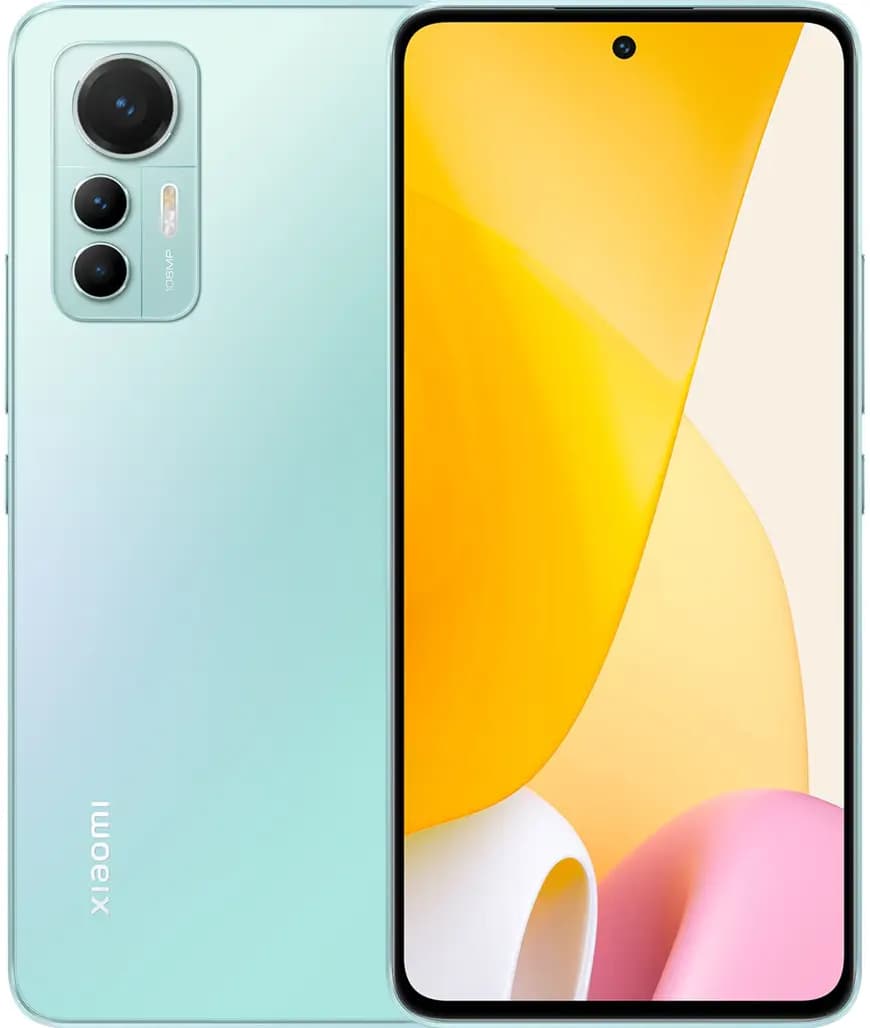
Platform
OS: Android 12CPU: Snapdragon 778G
Memory
6/128, 8/128, 8/256External card: no
Size
6.55", 173 g (6.10 oz)159.3 x 73.7 x 7.3 mm
6.27 x 2.90 x 0.29 in
Battery
4300 mAhBuy now on Amazon
Main camera
108 MP, f/1.9, 26mm (wide), 1/1.52", 0.7µm8 MP, f/2.2, (ultrawide), 1/4.0", 1.12µm
2 MP, f/2.4, (macro)
Video modes
4K@30fps1080p@30/60/120fps
Selfie camera
32 MP, f/2.5, (wide), 1/2.8", 0.8µmVideo modes
1080p@30/60fps720p@120fps
🤖 CPU
The Xiaomi Mi 12 Lite boasts the Qualcomm Snapdragon 778G processor, a significant upgrade from the Snapdragon 732G found in the previous year`s Mi 11 Lite. The 778G is built on a more advanced 6nm manufacturing process, generally translating to improved performance and power efficiency compared to the 8nm process of its predecessor.
While both processors feature an octa-core CPU configuration, the 778G`s architecture and core configurations differ, potentially offering better sustained performance and overall efficiency. This could result in smoother multitasking, improved gaming experiences, and better handling of demanding workloads on the Mi 12 Lite.
📸 Camera
In the camera department, the Mi 12 Lite introduces notable improvements over its predecessor. The main camera features a larger 1/1.52" sensor with 0.7µm pixels, compared to the Mi 11 Lite`s 1/1.97" sensor with 0.7µm pixels. This increased sensor size and pixel size could translate to better low-light performance, improved dynamic range, and overall image quality, particularly in challenging lighting conditions.
However, the Mi 11 Lite`s 64MP main camera still boasts a higher resolution than the Mi 12 Lite`s 108MP sensor, potentially allowing it to capture sharper images with finer details in well-lit environments. Both phones offer ultrawide and macro cameras for added versatility, but the specifications suggest the Mi 12 Lite`s ultrawide and macro cameras may be similar to those on the Mi 11 Lite.
💿 Memory & Storage
The Mi 12 Lite caters to diverse user needs with various memory and storage configurations. Users can choose between 6GB or 8GB of RAM, paired with 128GB or 256GB of storage. In comparison, the Mi 11 Lite offered a similar 6GB or 8GB RAM option but with additional 64GB and 256GB storage choices.
While the Mi 12 Lite lacks a dedicated microSD card slot, it still supports external storage via a shared SIM slot, allowing users to expand the available storage if needed.
📱 Display
While both phones feature a 6.55-inch display, specific details about the display technology, resolution, and brightness levels on the Mi 12 Lite are not provided in the given specifications.
🔋 Battery
Both phones pack impressive battery capacities, with the Mi 12 Lite offering a slightly larger 4,300mAh battery compared to the 4,250mAh unit in the Mi 11 Lite. This marginal increase in battery capacity could potentially translate to slightly better battery life on the Mi 12 Lite, although real-world usage and optimization will play a significant role.
Additionally, both devices support 67W wired fast charging, ensuring a quick power boost when needed. They also share compatibility with PD3.0 and QC4 fast charging standards, providing flexibility in terms of compatible chargers.
🎞️ YouTube reviews
Xiaomi 12X
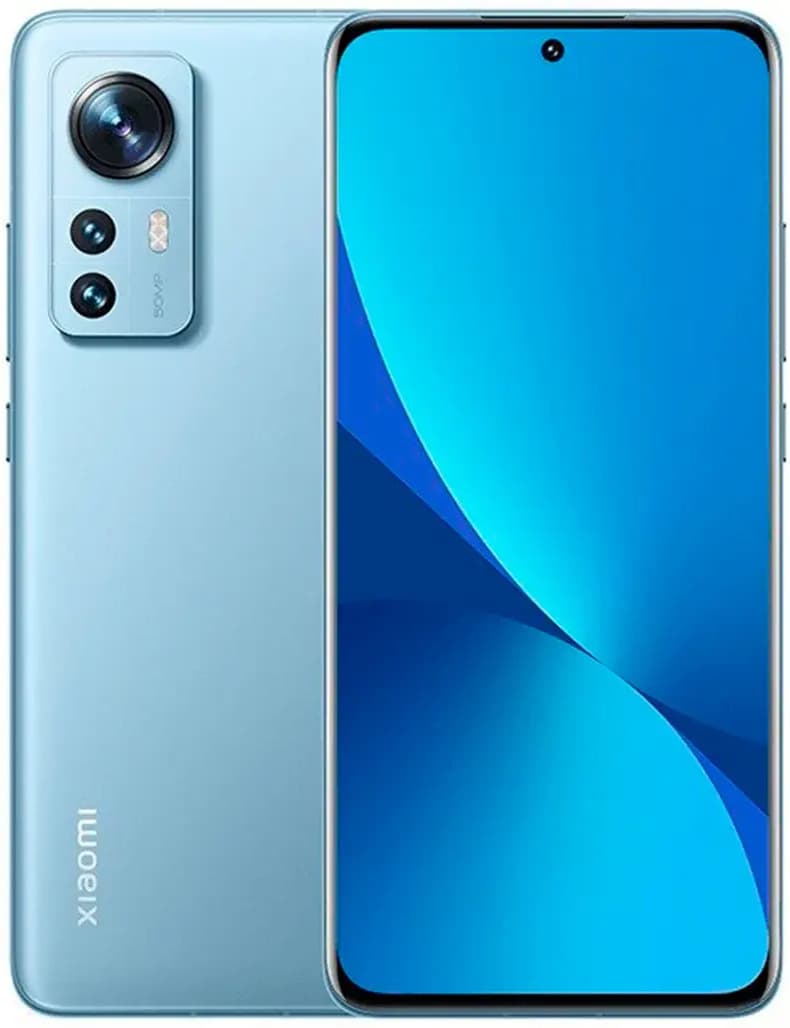
Platform
OS: Android 12CPU: Snapdragon 870
Memory
8/128, 8/256, 12/256External card: no
Size
6.28", 176 g (6.21 oz)152.7 x 69.9 x 8.2 mm
6.01 x 2.75 x 0.32 in
Battery
4500 mAhBuy now on Amazon
Main camera
50 MP, f/1.9, 26mm (wide), 1/1.56", 1.0µm13 MP, f/2.4, 12mm, (ultrawide), 1/3.06", 1.12µm
5 MP, f/2.4, 50mm (telephoto macro)
Video modes
8K@24fps4K@30/60fps
1080p@30/60/120/240/960fps
Selfie camera
32 MP, f/2.5, 26mm (wide), 0.7µmVideo modes
1080p@30/60fps720p@120fps
🤖 CPU
The Xiaomi 12X is powered by the Qualcomm Snapdragon 870 processor, which is a step up from the Snapdragon 778G found in the Xiaomi 12 Lite. The Snapdragon 870 is based on a more advanced 7nm manufacturing process, potentially offering better performance and power efficiency compared to the 778G`s 6nm process.
While both processors feature an octa-core CPU configuration, the Snapdragon 870`s architecture and core configurations differ, potentially offering better sustained performance and overall efficiency. This could result in smoother multitasking, improved gaming experiences, and better handling of demanding workloads on the Xiaomi 12X compared to the 12 Lite.
📸 Camera
In the camera department, the Xiaomi 12X and 12 Lite offer different camera setups. The 12X features a 50MP main camera with a larger 1/1.56" sensor size and larger 1.0µm pixel size, potentially improving low-light performance and dynamic range compared to the 12 Lite`s 108MP main camera with a 1/1.52" sensor and 0.7µm pixels.
However, the 12 Lite`s higher-resolution main camera could still capture sharper images with finer details in well-lit environments. The 12X also includes a 13MP ultrawide camera and a 5MP telephoto macro camera, while the 12 Lite has an 8MP ultrawide and a 2MP macro camera.
Additionally, the 12X supports 8K video recording at 24fps and 4K recording at up to 60fps, offering more advanced video capabilities compared to the 12 Lite`s 4K@30fps and 1080p@120fps video modes.
💿 Memory & Storage
Both phones offer various memory and storage configurations, but the Xiaomi 12X provides a higher-end option with 12GB of RAM and 256GB of storage. The 12 Lite tops out at 8GB of RAM and 256GB of storage. Like the 12 Lite, the 12X lacks a dedicated microSD card slot but supports external storage via a shared SIM slot.
📱 Display
The Xiaomi 12X features a slightly smaller 6.28-inch display compared to the 12 Lite`s 6.55-inch display. However, specific details about the display technology, resolution, and brightness levels for both devices are not provided in the given specifications.
🔋 Battery
The Xiaomi 12X packs a slightly larger 4,500mAh battery compared to the 4,300mAh unit in the 12 Lite. This marginal increase in battery capacity could potentially translate to better battery life on the 12X, although real-world usage and optimization will play a significant role. Both devices support 67W wired fast charging and share compatibility with PD3.0 and QC4 fast charging standards.
🎞️ YouTube reviews
Xiaomi 12
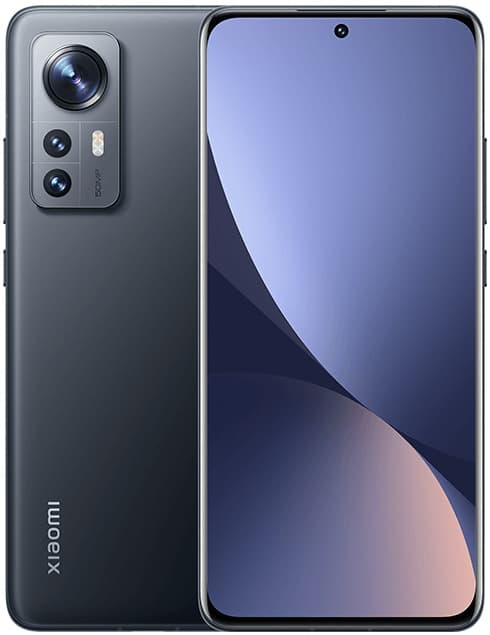
Platform
OS: Android 12CPU: Snapdragon 8 Gen 1
Memory
8/128, 8/256, 12/256External card: no
Size
6.28", 180 g (6.31 oz)152.7 x 69.9 x 8.2 mm
6.01 x 2.75 x 0.32 in
Battery
4500 mAhBuy now on SunSky
Main camera
50 MP, f/1.9, 26mm (wide), 1/1.56", 1.0µm13 MP, f/2.4, 12mm (ultrawide), 1/3.06", 1.12µm
5 MP, f/2.4, 50mm (telephoto macro)
Video modes
8K@24fps4K@30/60fps
1080p@30/60/120/240/960fps
720p@1920fps
Selfie camera
32 MP, f/2.5, (wide), 1/2.8", 0.8µmVideo modes
1080p@30/60fps720p@120fps
🤖 CPU
The Xiaomi 12 is powered by the latest Qualcomm Snapdragon 8 Gen 1 processor, which is a significant upgrade over the Snapdragon 870 found in the Xiaomi 12X and the Snapdragon 888 in the previous year`s Mi 11. The Snapdragon 8 Gen 1 is built on a more advanced 4nm manufacturing process, generally translating to improved performance and power efficiency compared to the 7nm process of its predecessors.
While all three processors feature an octa-core CPU configuration, the Snapdragon 8 Gen 1`s architecture and core configurations differ, potentially offering better sustained performance and overall efficiency. This could result in smoother multitasking, improved gaming experiences, and better handling of demanding workloads on the Xiaomi 12 compared to the 12X and Mi 11.
📸 Camera
In the camera department, the Xiaomi 12 shares the same camera setup as the 12X, featuring a 50MP main camera with a large 1/1.56" sensor size and 1.0µm pixel size, a 13MP ultrawide camera, and a 5MP telephoto macro camera. This setup potentially offers better low-light performance, improved dynamic range, and overall image quality compared to the Mi 11`s 108MP main camera with a smaller 1/1.33" sensor and 0.8µm pixels.
However, the Mi 11`s higher-resolution main camera could still capture sharper images with finer details in well-lit environments. Additionally, the Xiaomi 12 and 12X support 8K video recording at 24fps and 4K recording at up to 60fps, while the Mi 11 can record 8K video at up to 30fps.
💿 Memory & Storage
All three phones offer various memory and storage configurations, with the Xiaomi 12 and 12X sharing the same options: 8GB or 12GB of RAM, paired with 128GB or 256GB of storage. The Mi 11 also offers these configurations but includes an additional 6GB RAM option.
📱 Display
The Xiaomi 12 and 12X feature a 6.28-inch display, while the Mi 11 has a larger 6.81-inch display. However, specific details about the display technology, resolution, and brightness levels for all three devices are not provided in the given specifications.
🔋 Battery
The Xiaomi 12 and 12X both pack a 4,500mAh battery, while the Mi 11 has a slightly larger 4,600mAh battery. This marginal difference in battery capacity is unlikely to result in a significant difference in battery life, as real-world usage and optimization play a significant role. All three devices support 67W wired fast charging and share compatibility with PD3.0 and QC4 fast charging standards.
🎞️ YouTube reviews
Xiaomi 12 Pro
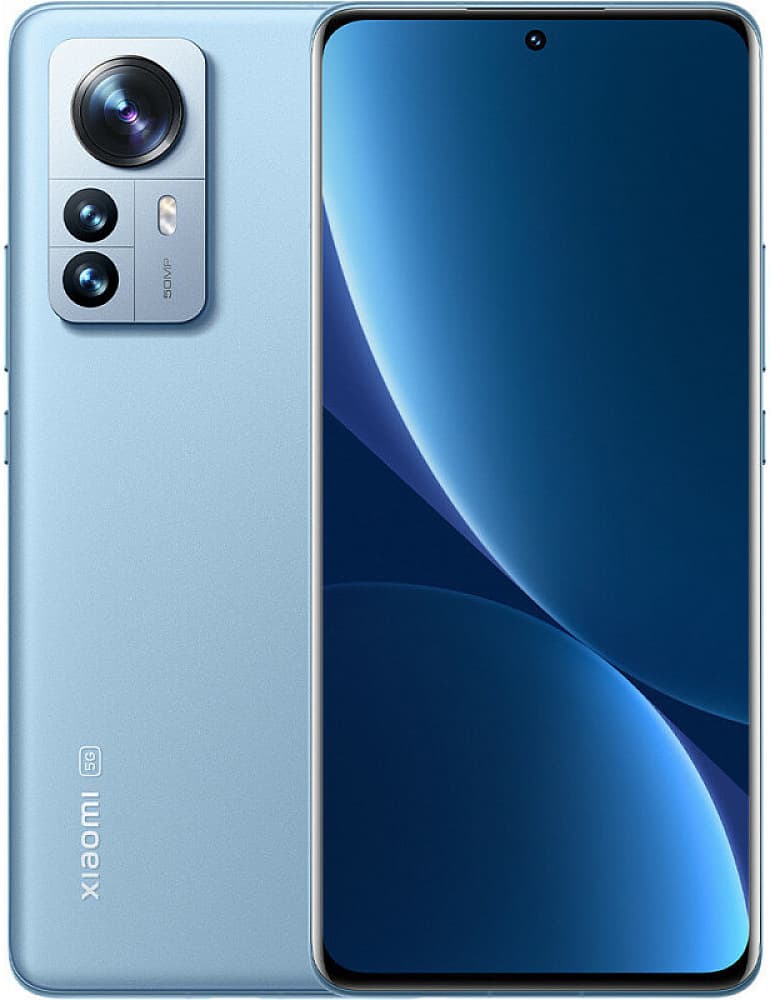
Platform
OS: Android 12CPU: Snapdragon 8 Gen 1
Memory
8/128, 8/256, 12/256External card: no
Size
6.73", 205 g (7.20 oz)163.6 x 74.6 x 8.2 mm
6.44 x 2.94 x 0.32 in
Battery
4600 mAhBuy now on SunSky
Main camera
50 MP, f/1.9, 24mm (wide), 1/1.28", 1.22µm50 MP, f/1.9, 48mm (telephoto)
50 MP, f/2.2, (ultrawide)
Video modes
8K@24fps4K@30/60fps
1080p@30/60/120/240fps
720p@3840fps
Selfie camera
32 MP, f/2.4, 25mm (wide), 0.7µmVideo modes
1080p@30/60fps720p@120fps
🤖 CPU
The Xiaomi 12 Pro is powered by the same Qualcomm Snapdragon 8 Gen 1 processor found in the standard Xiaomi 12, which is a significant upgrade over the Snapdragon 888 in the previous year`s Mi 11 Pro. The Snapdragon 8 Gen 1 is built on a more advanced 4nm manufacturing process, generally translating to improved performance and power efficiency compared to the 5nm process of the Snapdragon 888.
While all three processors feature an octa-core CPU configuration, the Snapdragon 8 Gen 1`s architecture and core configurations differ, potentially offering better sustained performance and overall efficiency compared to the Snapdragon 888. This could result in smoother multitasking, improved gaming experiences, and better handling of demanding workloads on both the Xiaomi 12 Pro and the standard Xiaomi 12.
📸 Camera
The Xiaomi 12 Pro boasts an impressive triple camera setup, featuring three 50MP sensors for the wide, telephoto, and ultrawide cameras. The wide and telephoto cameras have large 1/1.28" sensor sizes, respectively, with 1.22µm pixel sizes, potentially offering improved low-light performance and dynamic range compared to the standard Xiaomi 12`s 50MP wide camera with a 1/1.56" sensor and 1.0µm pixels.
Additionally, the 12 Pro`s dedicated 50MP telephoto camera with 2x optical zoom provides more versatility for zooming in on subjects compared to the 12`s 5MP telephoto macro camera. Both the 12 Pro and 12 support 8K video recording at 24fps and 4K recording at up to 60fps, while the Mi 11 Pro can record 8K video at 24fps and 4K at up to 60fps.
💿 Memory & Storage
All three phones offer similar memory and storage configurations, with options for 8GB or 12GB of RAM, paired with 128GB or 256GB of storage. Like the Xiaomi 12 and Mi 11 Pro, the 12 Pro lacks a dedicated microSD card slot but supports external storage via a shared SIM slot.
📱 Display
The Xiaomi 12 Pro features a larger 6.73-inch display compared to the 6.28-inch display on the standard Xiaomi 12. The Mi 11 Pro also has a 6.81-inch display, slightly larger than the 12 Pro. However, specific details about the display technology, resolution, and brightness levels for all three devices are not provided in the given specifications.
🔋 Battery
The Xiaomi 12 Pro packs a larger 4,600mAh battery compared to the 4,500mAh unit in the standard Xiaomi 12. However, the Mi 11 Pro has an even larger 5,000mAh battery, potentially offering the best battery life among the three devices. All three phones support 67W wired fast charging and share compatibility with PD3.0 and QC4 fast charging standards.
🎞️ YouTube reviews
Xiaomi 12 Pro (Dimensity)
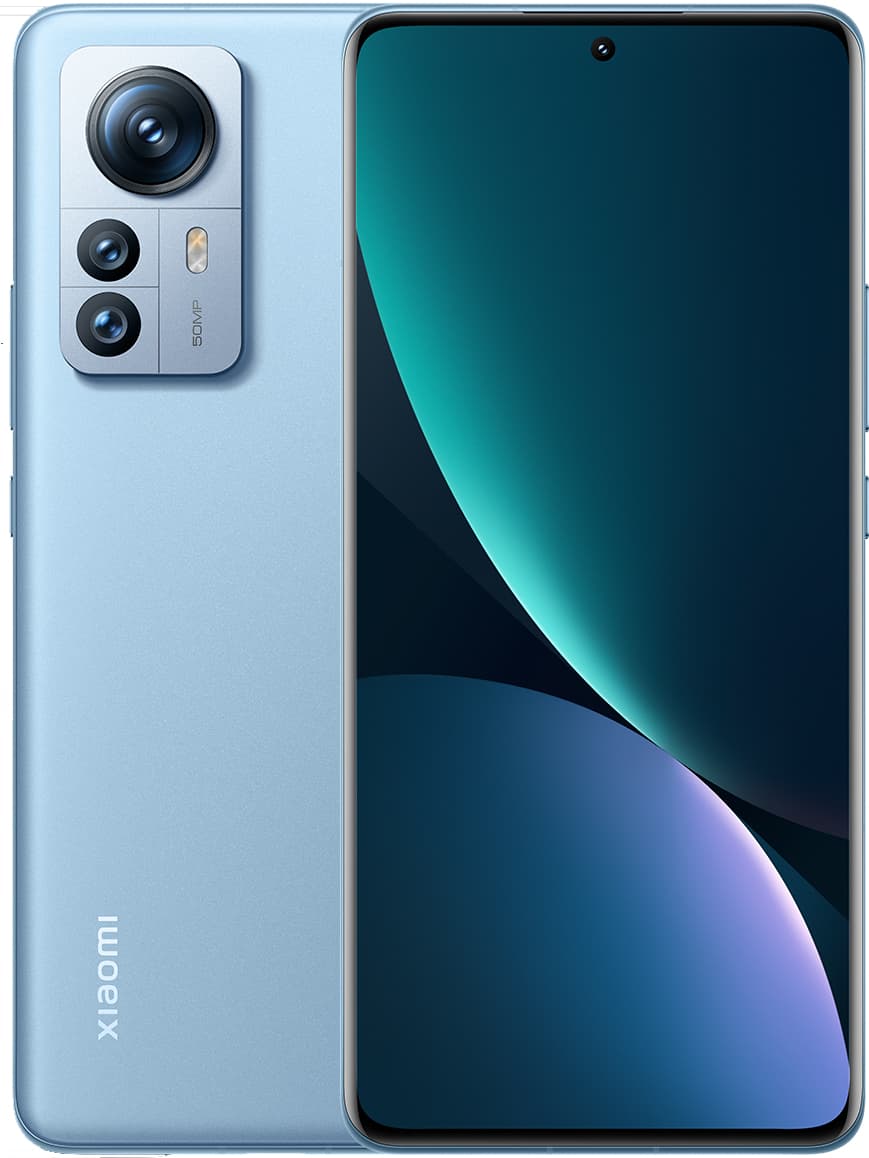
Platform
OS: Android 12CPU: Dimensity 9000+
Memory
8/128, 12/256External card: no
Size
6.73", 201 g (7.09 oz)163.6 x 74.6 x 8.2 mm
6.44 x 2.94 x 0.32 in
Battery
5160 mAhBuy now on SunSky
Main camera
50 MP, f/1.9, 24mm (wide), 1/1.28", 1.22µm13 MP, f/2.4, 15mm, (ultrawide), 1/3.06", 1.12µm
5 MP, f/2.4, 50mm (telephoto macro)
Video modes
4K@30/60fps1080p@30/60/120/240fps
Selfie camera
32 MP, f/2.5, 26mm (wide), 0.7µmVideo modes
1080p@30/60fps720p@120fps
Xiaomi made two versions of the flglaship model (this one uses Dimensity 9000+) to sell it in different markets, primarily targeting India/Asia. In terms of camera specifications this model is similar to Xiaomi 12 model (non-Pro).
Xiaomi 12S
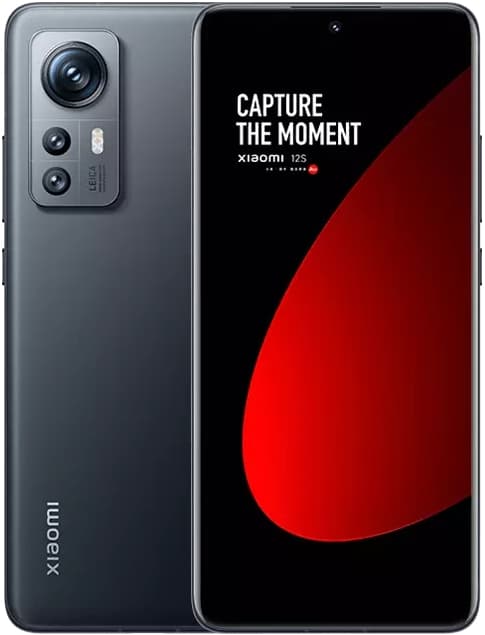
Platform
OS: Android 12CPU: Snapdragon 8+ Gen 1
Memory
8/128, 8/256, 12/256, 12/512External card: no
Size
6.28", 182 g (6.31 oz)152.7 x 69.9 x 8.2 mm
6 x 2.75 x 0.32 in
Battery
4500 mAhBuy now on SunSky
Main camera
50 MP, f/1.9, 24mm (wide), 1/1.28", 1.22µm13 MP, f/2.4, 15mm, 123˚ (ultrawide), 1/3.06", 1.12µm
5 MP, f/2.4, 50mm (telephoto macro)
Video modes
8K@24fps4K@30/60fps
1080p@30/60fps
720p@1920fps
Selfie camera
32 MP, f/2.5, 26mm (wide), 0.7µmVideo modes
1080p@30/60fps720p@120fps
🤖 CPU
The Xiaomi 12S is powered by the latest Qualcomm Snapdragon 8+ Gen 1 processor, which is an upgraded version of the Snapdragon 8 Gen 1 found in the standard Xiaomi 12. The Snapdragon 8+ Gen 1 is built on the same 4nm manufacturing process but features higher clock speeds and improved power efficiency compared to the regular Snapdragon 8 Gen 1.
While both processors feature an octa-core CPU configuration, the Snapdragon 8+ Gen 1`s higher clock speeds and optimizations could potentially offer better sustained performance and overall efficiency compared to the standard Snapdragon 8 Gen 1. This could result in smoother multitasking, improved gaming experiences, and better handling of demanding workloads on the Xiaomi 12S.
📸 Camera
In the camera department, the Xiaomi 12S features a similar triple camera setup to the standard Xiaomi 12, with a 50MP wide camera, a 13MP ultrawide camera, and a 5MP telephoto macro camera. However, the 12S`s 50MP wide camera has a larger 1/1.28" sensor size and 1.22µm pixel size compared to the 12`s 1/1.56" sensor and 1.0µm pixels, potentially offering improved low-light performance and dynamic range.
Additionally, the 12S`s ultrawide camera has a wider 123-degree field of view compared to the 12`s 12mm ultrawide camera. Both phones support 8K video recording at 24fps and 4K recording at up to 60fps.
💿 Memory & Storage
The Xiaomi 12S offers more memory and storage configuration options compared to the standard Xiaomi 12. In addition to the 8GB and 12GB RAM options paired with 128GB, 256GB, or 512GB of storage, the 12S also introduces a new 12GB RAM and 512GB storage variant, catering to users with higher memory and storage demands. Like the Xiaomi 12, the 12S lacks a dedicated microSD card slot but supports external storage via a shared SIM slot.
📱 Display
The Xiaomi 12S and Xiaomi 12 share the same 6.28-inch display size. However, specific details about the display technology, resolution, and brightness levels for both devices are not provided in the given specifications.
🔋 Battery
Both the Xiaomi 12S and Xiaomi 12 pack the same 4,500mAh battery capacity. Additionally, they share support for 67W wired fast charging and compatibility with PD3.0 and QC4 fast charging standards, ensuring a quick power boost when needed.
🎞️ YouTube reviews
Xiaomi 12S Pro
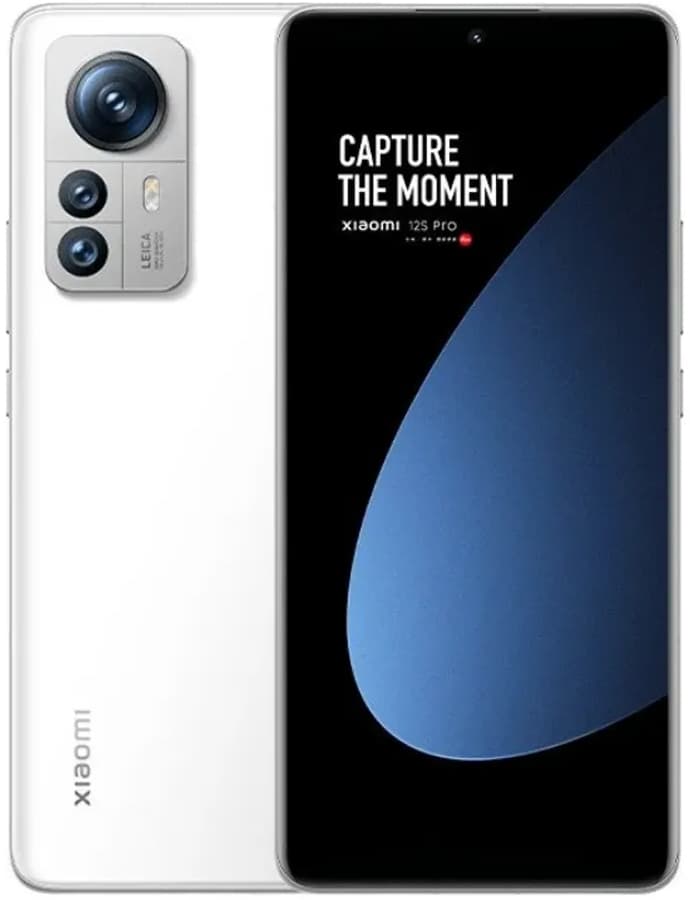
Platform
OS: Android 12CPU: Snapdragon 8+ Gen 1
Memory
8/128, 8/256, 12/256, 12/512External card: no
Size
6.73", 204 g (7.16 oz)163.6 x 74.6 x 8.2 mm
6.44 x 2.94 x 0.32 in
Battery
4600 mAhBuy now on SunSky
Main camera
50 MP, f/1.9, 24mm (wide), 1/1.28", 1.22µm50 MP, f/1.9, 50mm (telephoto)
50 MP, f/2.2, (ultrawide)
Video modes
8K@24fps4K@30/60fps
1080p@30/60/120/240/960fps
720p@1920fps
Selfie camera
32 MP, f/2.5, 26mm (wide), 0.7µmVideo modes
1080p@30/60fps720p@120fps
🤖 CPU
Both the Xiaomi 12S Pro and the non-Pro 12S model are powered by the latest Qualcomm Snapdragon 8+ Gen 1 processor, which is an upgraded version of the Snapdragon 8 Gen 1 found in the Xiaomi 12 Pro. The Snapdragon 8+ Gen 1 is built on the same 4nm manufacturing process but features higher clock speeds and improved power efficiency compared to the regular Snapdragon 8 Gen 1.
While all three processors feature an octa-core CPU configuration, the Snapdragon 8+ Gen 1`s higher clock speeds and optimizations could potentially offer better sustained performance and overall efficiency compared to the Snapdragon 8 Gen 1 in the 12 Pro. This could result in smoother multitasking, improved gaming experiences, and better handling of demanding workloads on both the Xiaomi 12S Pro and the non-Pro 12S.
📸 Camera
The Xiaomi 12S Pro boasts an impressive triple camera setup, featuring three 50MP sensors for the wide, telephoto, and ultrawide cameras. The wide and telephoto cameras have large 1/1.28" sensor sizes and 1.22µm pixel sizes, potentially offering improved low-light performance and dynamic range compared to the non-Pro 12S`s 50MP wide camera and the 12 Pro`s wide and telephoto cameras, which share the same specifications.
Additionally, the 12S Pro`s dedicated 50MP telephoto camera with 2x optical zoom provides more versatility for zooming in on subjects compared to the non-Pro 12S`s 5MP telephoto macro camera and the 12 Pro`s 48mm telephoto camera. All three phones support 8K video recording at 24fps and 4K recording at up to 60fps.
💿 Memory & Storage
The Xiaomi 12S Pro and the non-Pro 12S offer identical memory and storage configurations, with options for 8GB or 12GB of RAM, paired with 128GB, 256GB, or 512GB of storage. In contrast, the 12 Pro lacks the 512GB storage option, maxing out at 12GB of RAM and 256GB of storage. Like the other models, the 12S Pro lacks a dedicated microSD card slot but supports external storage via a shared SIM slot.
📱 Display
Both the Xiaomi 12S Pro and the 12 Pro feature a larger 6.73-inch display compared to the 6.28-inch display on the non-Pro 12S. However, specific details about the display technology, resolution, and brightness levels for all three devices are not provided in the given specifications.
🔋 Battery
The Xiaomi 12S Pro and the 12 Pro share the same 4,600mAh battery capacity, while the non-Pro 12S has a slightly smaller 4,500mAh battery. However, the difference in battery capacity is unlikely to result in a significant difference in battery life, as real-world usage and optimization play a significant role. All three phones support 67W wired fast charging and share compatibility with PD3.0 and QC4 fast charging standards.
🎞️ YouTube reviews
Xiaomi 12S Ultra
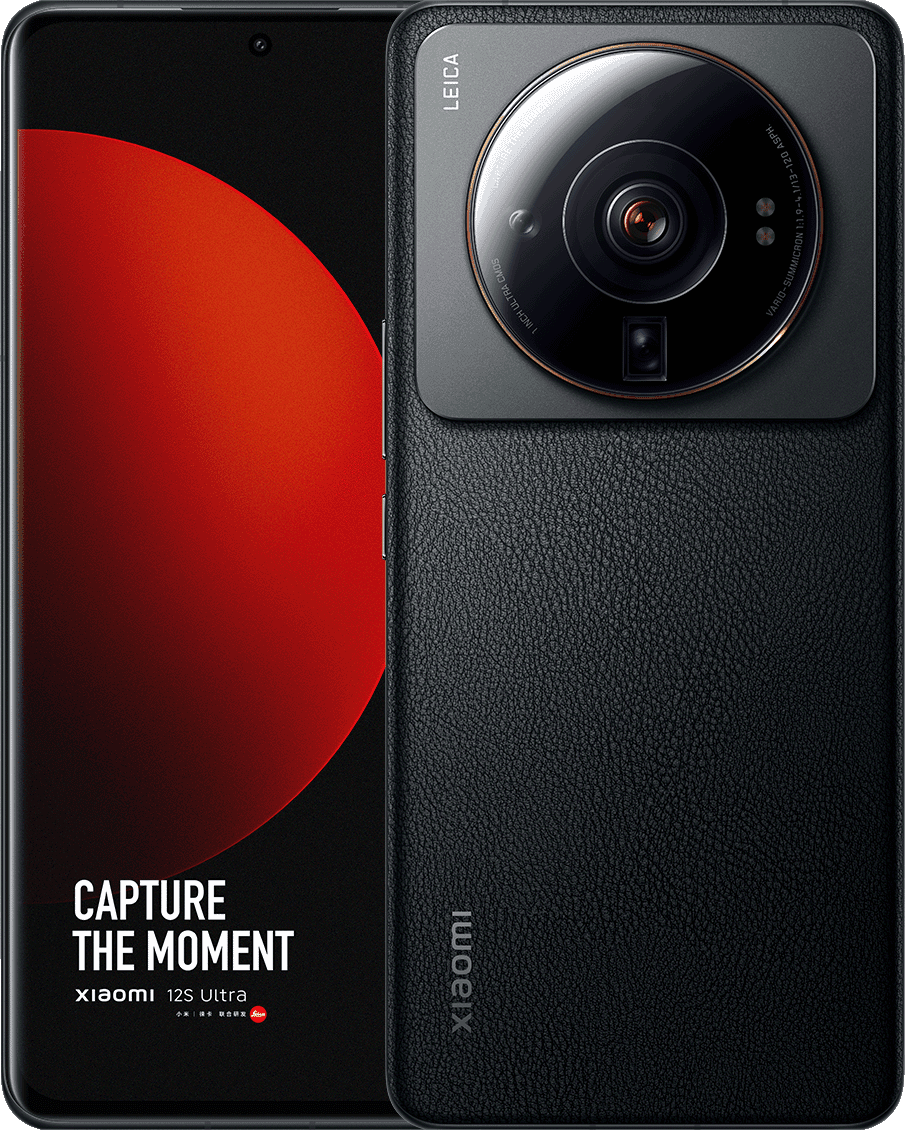
Platform
OS: Android 12CPU: Snapdragon 8+ Gen 1
Memory
8/256, 12/256, 12/512External card: no
Size
6.73", 225 g (7.94 oz)163.2 x 75 x 9.1 mm
6.43 x 2.95 x 0.36 in
Battery
4600 mAhBuy now on Amazon
Main camera
50 MP, f/1.9, 23mm (wide), 1.0", 1.6µm48 MP, f/4.1, 120mm (periscope telephoto), 1/2.0", 0.8µm
48 MP, f/2.2, 13mm, 128˚ (ultrawide), 1/2.0", 0.8µm
Video modes
8K@24fps4K@30/60fps
1080p@30/60/120/240/960fps
720p@1920fps
Selfie camera
32 MP, f/2.5, 26mm (wide), 0.7µmVideo modes
1080p@30/60fps720p@120fps
🤖 CPU
The Xiaomi 12S Ultra is powered by the same Qualcomm Snapdragon 8+ Gen 1 processor found in the 12S Pro, which is an upgraded version of the Snapdragon 888 used in the previous year`s Mi 11 Ultra. The Snapdragon 8+ Gen 1 is built on a more advanced 4nm manufacturing process and features higher clock speeds and improved power efficiency compared to the 5nm Snapdragon 888.
While all three processors feature an octa-core CPU configuration, the Snapdragon 8+ Gen 1`s higher clock speeds and optimizations could potentially offer better sustained performance and overall efficiency compared to the Snapdragon 888 in the Mi 11 Ultra. This could result in smoother multitasking, improved gaming experiences, and better handling of demanding workloads on both the Xiaomi 12S Ultra and the 12S Pro.
📸 Camera
The Xiaomi 12S Ultra boasts an impressive quad camera setup, featuring a 50MP wide camera with a massive 1.0" sensor size and 1.6µm pixel size, a 48MP periscope telephoto camera, and a 48MP ultrawide camera with a 128-degree field of view. This setup potentially offers exceptional low-light performance, dynamic range, and zooming capabilities compared to the triple camera setups on the 12S Pro and Mi 11 Ultra.
While the 12S Pro and Mi 11 Ultra also feature impressive camera setups, the 12S Ultra`s larger sensor size and pixel size for the wide camera could provide a noticeable advantage in image quality, particularly in low-light conditions. All three phones support 8K video recording at 24fps and 4K recording at up to 60fps.
💿 Memory & Storage
The Xiaomi 12S Ultra offers memory and storage configurations of 8GB or 12GB of RAM, paired with 256GB or 512GB of storage. The 12S Pro offers the same options, while the Mi 11 Ultra is limited to 8GB or 12GB of RAM with 256GB of storage.
📱 Display
The Xiaomi 12S Ultra and 12S Pro share the same 6.73-inch display size, while the Mi 11 Ultra features a slightly larger 6.81-inch display. However, specific details about the display technology, resolution, and brightness levels for all three devices are not provided in the given specifications.
🔋 Battery
The Xiaomi 12S Ultra and 12S Pro share the same 4,600mAh battery capacity, while the Mi 11 Ultra has a slightly larger 5,000mAh battery. While the difference in battery capacity is relatively small, the Mi 11 Ultra may offer slightly better battery life due to its larger battery. All three phones support 67W wired fast charging and share compatibility with PD3.0 and QC4 fast charging standards.
🎞️ YouTube reviews
Xiaomi 12T
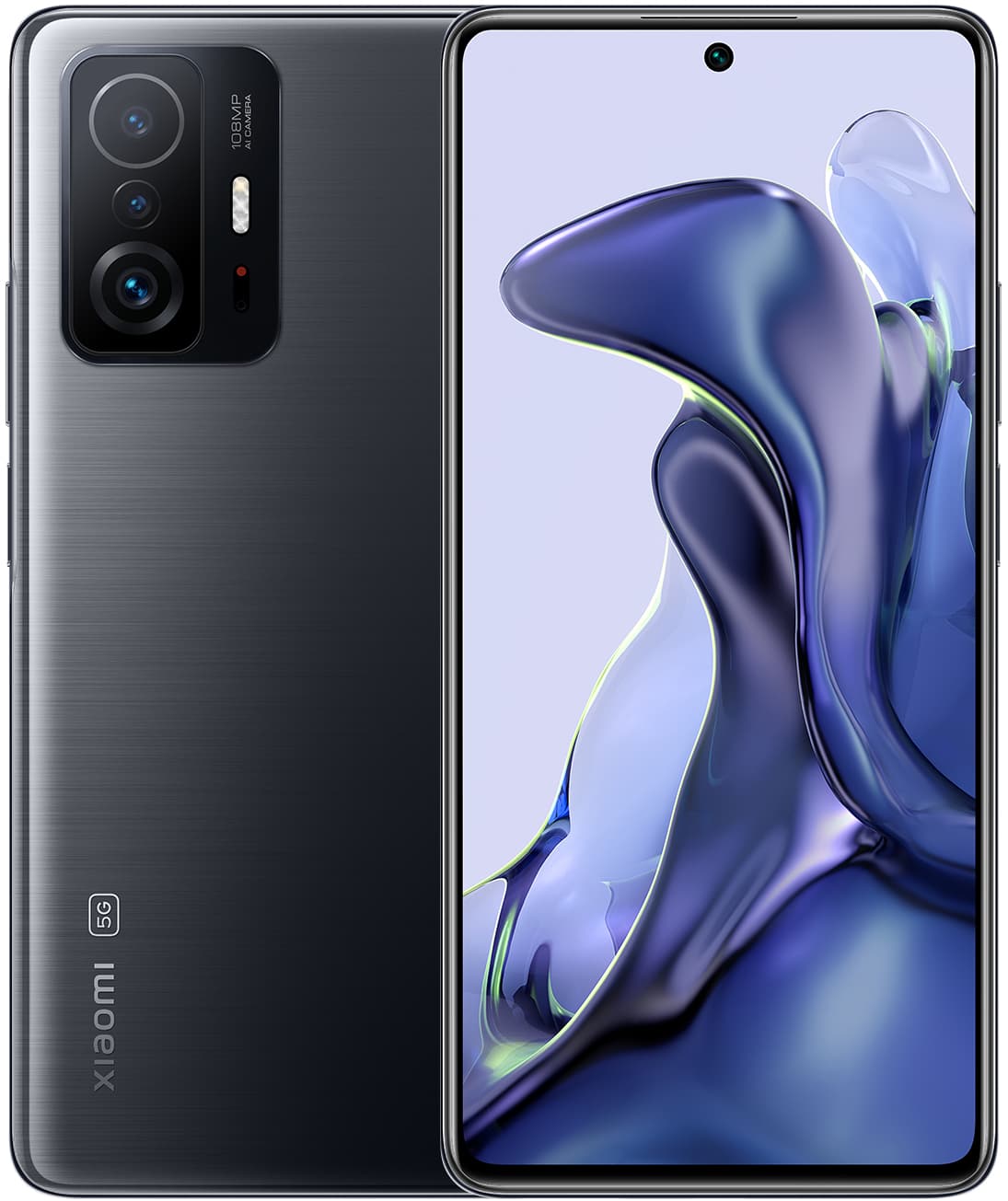
Platform
OS: Android 12CPU: Dimensity 8100-Ultra
Memory
8/128, 8/256External card: no
Size
6.67", 202 g (7.13 oz)163.1 x 75.9 x 8.6 mm
6.42 x 2.99 x 0.34 in
Battery
5000 mAhBuy now on Amazon
Main camera
108 MP, f/1.7, 24mm (wide), 1/1.67", 0.64µm8 MP, f/2.2, (ultrawide), 1/4", 1.12µm
2 MP, f/2.4, (macro)
Video modes
4K@30fps1080p@30/60/120/240fps
Selfie camera
20 MP, f/2.2, (wide), 1/3.47", 0.8µmVideo modes
1080p@30/60fps🤖 CPU
The Xiaomi 12T is powered by the MediaTek Dimensity 8100-Ultra processor, which is a high-end chipset designed for flagship-level performance. While the Dimensity 8100-Ultra is a capable processor, it may not be as powerful as the Qualcomm Snapdragon 8 Gen 1 found in the Xiaomi 12 or the Dimensity 1200 in the Mi 11T.
The Snapdragon 8 Gen 1 is Qualcomm`s flagship processor for 2022, built on a more advanced 4nm manufacturing process and offering improved performance and power efficiency compared to the Dimensity 8100-Ultra`s 5nm process. Similarly, the Dimensity 1200 in the Mi 11T, while not as powerful as the Snapdragon 8 Gen 1, may still offer better performance than the Dimensity 8100-Ultra in the 12T.
📸 Camera
The Xiaomi 12T features a triple camera setup, with a 108MP wide camera, an 8MP ultrawide camera, and a 2MP macro camera. The wide camera features a large 1/1.67" sensor size and 0.64µm pixel size, which could potentially offer improved low-light performance and dynamic range compared to the 50MP wide camera on the Xiaomi 12 and the 108MP wide camera on the Mi 11T, which have smaller sensor sizes.
However, the 12T lacks a dedicated telephoto camera, which the Xiaomi 12 and some variants of the Mi 11T offer. Additionally, the 12T`s video capabilities are limited to 4K@30fps, while the Xiaomi 12 and Mi 11T support higher frame rates and resolutions like 8K@24fps.
💿 Memory & Storage
The Xiaomi 12T is available in 8GB RAM configurations, paired with either 128GB or 256GB of storage. This is similar to the memory and storage options offered by the Mi 11T, but the Xiaomi 12 has additional options, including a 12GB RAM variant and a 256GB storage option.
📱 Display
The Xiaomi 12T features a larger 6.67-inch display compared to the 6.28-inch display on the Xiaomi 12. The Mi 11T also has a 6.67-inch display, matching the 12T`s screen size. However, specific details about the display technology, resolution, and brightness levels for all three devices are not provided in the given specifications.
🔋 Battery
The Xiaomi 12T packs an impressive 5,000mAh battery, which is larger than the 4,500mAh battery in the Xiaomi 12 but matches the battery capacity of the Mi 11T. This larger battery could potentially offer better battery life on the 12T compared to the Xiaomi 12, although real-world usage and optimization play a significant role. All three phones support fast charging, but the specific charging speeds and standards are not provided in the given specifications.
🎞️ YouTube reviews
Xiaomi 12T Pro
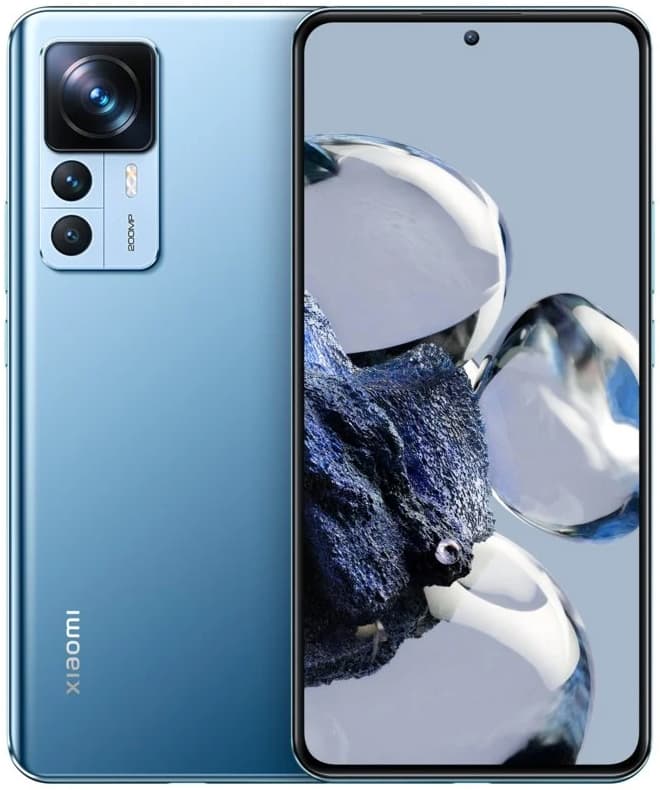
Platform
OS: Android 12CPU: Snapdragon 8+ Gen 1
Memory
8/128, 8/256, 12/256External card: no
Size
6.67", 205 g (7.23 oz)163.1 x 75.9 x 8.6 mm
6.42 x 2.99 x 0.34 in
Battery
5000 mAhBuy on Amazon
Main camera
200 MP, f/1.7, (wide), 1/1.22", 0.64µm8 MP, f/2.2, (ultrawide), 1/4", 1.12µm
2 MP, f/2.4, (macro)
Video modes
8K@24fps4K@30/60fps
1080p@30/60/120/240fps
Selfie camera
20 MP, f/2.2, (wide), 1/3.47", 0.8µmVideo modes
1080p@30/60fps🤖 CPU
The Xiaomi 12T Pro is powered by the Qualcomm Snapdragon 8+ Gen 1 processor, which is an upgraded version of the Snapdragon 8 Gen 1 found in the Xiaomi 12. This processor is built on a 4nm manufacturing process and features higher clock speeds and improved power efficiency compared to the regular Snapdragon 8 Gen 1.
In contrast, the Xiaomi 12T and Mi 11T Pro use the MediaTek Dimensity 8100-Ultra and Snapdragon 888 processors, respectively. While the Dimensity 8100-Ultra is a capable chipset, it may not match the performance of the Snapdragon 8+ Gen 1 in the 12T Pro. Similarly, the older Snapdragon 888 in the Mi 11T Pro, while still a flagship-level processor, is likely to be outperformed by the more advanced Snapdragon 8+ Gen 1.
📸 Camera
The standout feature of the Xiaomi 12T Pro is its massive 200MP wide camera sensor with a 1/1.22" sensor size and 0.64µm pixel size. This large sensor could potentially offer exceptional low-light performance, dynamic range, and overall image quality compared to the 108MP wide cameras on the 12T and Mi 11T Pro, which have smaller sensor sizes (1/1.67" and 1/1.52", respectively).
However, all three phones share the same 8MP ultrawide and 2MP macro camera sensors. Additionally, the 12T Pro supports 8K video recording at 24fps, while the 12T and Mi 11T Pro are limited to 4K@30fps.
💿 Memory & Storage
The Xiaomi 12T Pro offers more memory and storage options compared to the 12T, with configurations of 8GB or 12GB of RAM paired with 128GB, 256GB, or 512GB of storage. The 12T is limited to 8GB of RAM and either 128GB or 256GB of storage. The Mi 11T Pro`s memory and storage options are similar to the 12T Pro, with 8GB or 12GB of RAM and up to 256GB of storage.
📱 Display
All three phones feature a 6.67-inch display, providing a large viewing area for multimedia consumption and productivity tasks. However, specific details about the display technology, resolution, and brightness levels are not provided in the given specifications.
🔋 Battery
All three phones pack a large 5,000mAh battery, which should provide excellent battery life for most users. However, real-world battery performance will depend on various factors, including display resolution, brightness, and usage patterns.
🎞️ YouTube reviews
In the ever-evolving world of smartphones, Xiaomi has once again delivered a compelling lineup with the Xiaomi 12 series. From the budget-friendly Xiaomi 12 Lite to the flagship Xiaomi 12S Ultra, this range caters to a wide array of users with diverse needs and budgets. Whether you prioritize raw performance, exceptional camera capabilities, or a stunning display, there is likely a device in this lineup that will meet your requirements.
While each model in the Xiaomi 12 lineup boasts its own unique strengths, a few standout features are worth highlighting. The Xiaomi 12S Ultra, in particular, is a true powerhouse, armed with the latest Snapdragon 8+ Gen 1 processor, a massive 1.0" wide camera sensor, and an impressive quad-camera setup. For those seeking a more affordable option, the Xiaomi 12T series offers a compelling blend of performance, camera capabilities, and a generous 5,000mAh battery, all at a relatively budget-friendly price point.
Ultimately, Xiaomi`s latest offerings demonstrate the company`s commitment to innovation and its ability to deliver feature-rich devices that cater to a wide range of consumers. With a diverse array of models to choose from, each packing its own set of strengths and capabilities, the Xiaomi 12 lineup is poised to make waves in the highly competitive smartphone market.